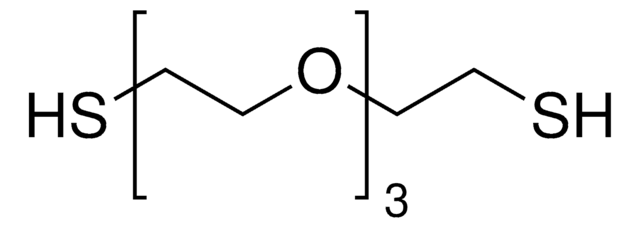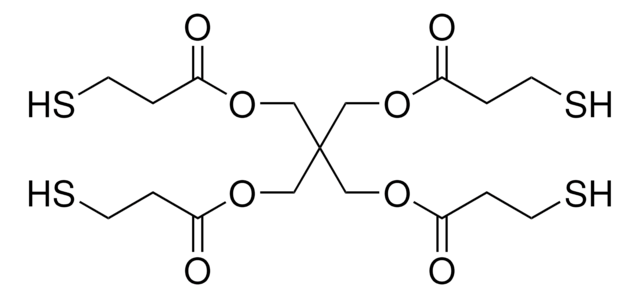推荐产品
表单
powder
分子量
average Mn 8,000
反应适用性
reagent type: cross-linking reagent
reactivity: thiol reactive
mp
63-67 °C
Ω端
thiol
α端
thiol
聚合物结构设计
shape: linear
functionality: homobifunctional
储存温度
2-8°C
正在寻找类似产品? 访问 产品对比指南
储存分类代码
13 - Non Combustible Solids
WGK
nwg
闪点(°F)
Not applicable
闪点(°C)
Not applicable
个人防护装备
Eyeshields, Gloves, type N95 (US)
法规信息
商品
将基于水凝胶的生物材料用于递送和募集细胞以促进体内组织再生是新生的研究热题。本文讨论了水凝胶在细胞递送和组织再生中的应用。
Hydrogel-based biomaterials for cell delivery and tissue regeneration applications are discussed.
Progress in biotechnology fields such as tissue engineering and drug delivery is accompanied by an increasing demand for diverse functional biomaterials. One class of biomaterials that has been the subject of intense research interest is hydrogels, because they closely mimic the natural environment of cells, both chemically and physically and therefore can be used as support to grow cells. This article specifically discusses poly(ethylene glycol) (PEG) hydrogels, which are good for biological applications because they do not generally elicit an immune response. PEGs offer a readily available, easy to modify polymer for widespread use in hydrogel fabrication, including 2D and 3D scaffold for tissue culture. The degradable linkages also enable a variety of applications for release of therapeutic agents.
Designing biomaterial scaffolds mimicking complex living tissue structures is crucial for tissue engineering and regenerative medicine advancements.
我们的科学家团队拥有各种研究领域经验,包括生命科学、材料科学、化学合成、色谱、分析及许多其他领域.
联系技术服务部门





